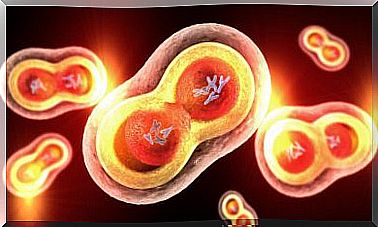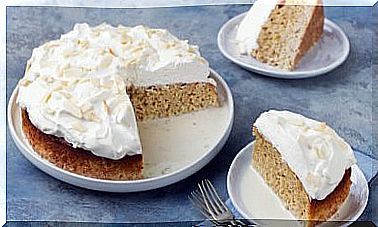Baby-Led Weaning: An Interesting Technique To Feed Your Baby
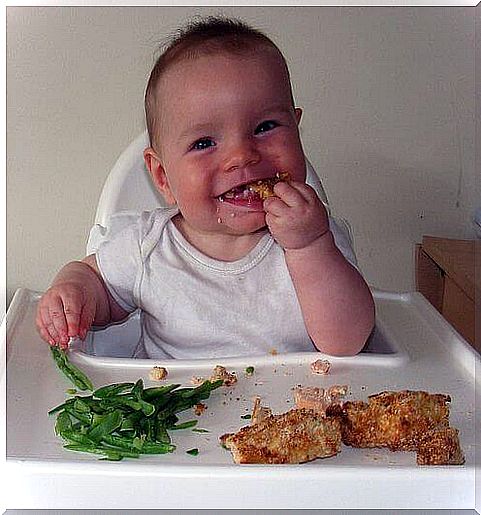
Have you ever heard about the Baby-Led Weaning? This is an interesting technique for feeding babies. It was put into practice by our grandparents, but now it has become very popular. It is neither more nor less than the introduction of complementary feeding.
However, there are a number of peculiarities surrounding this method. In the first instance, mothers tend to emphasize the naturalness of the technique. Well, the baby is allowed to feed itself while learning through the senses. A great tool when it is time to abandon exclusive breastfeeding.
However, there are many more reasons why it is recommended by the World Health Organization and the world’s pediatric associations. What does it consist of on time? Why is it so recommended by the world of science? How to implement it at home? Find out in this article.
What is Baby-Led Weaning?
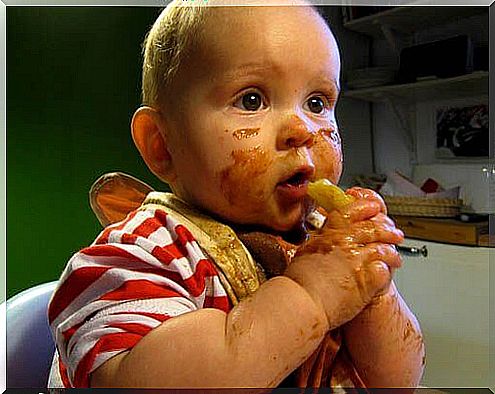
The Baby-Led Weaning is the alternative complementary feeding method to the spoon. It offers the child the possibility of self-regulating their needs. Thus, mothers and fathers only limit themselves to putting healthy and varied foods at their fingertips so that the child can choose what they want.
In this way, the technique consists of sitting the child in his chair to participate in the family meal. To begin, soft foods are separated into large, unseasoned chunks. The child can select the food to touch and then begin to suck on it.
This is ideal for the child to feel aromas and textures. Well, as you well know, the little ones learn by playing, thanks to their touch. Then, the portion of each food must be smaller to work the fine motor skills of the baby.
According to experts, this not only strengthens the facial muscles. It also speeds up the process of infant feeding. Well, quickly the little one will drink from a glass and handle cutlery when the rest will appeal to the bottle and eat the porridge that his father brings to his mouth.
Why is it so beneficial for the baby?
As we said, the Baby-Led Weaning method is very beneficial at the learning level, as well as in the psychomotor field. However, there are many more advantages. First of all, they really enjoy eating this way and together with the family.
Babies have too much fun, they learn to eat and they imitate their elders. They may eat little at first and play more to experience textures and flavors. In this phase, the diet will have an eminently educational objective, and not a nutritional one.
Little by little, the infant will eat larger amounts, so it will require less breast milk. That is, this technique allows a slow and gradual weaning, as well as natural and pleasant. In this way, it is feasible to achieve a prolonged lactation, as recommended by the WHO.
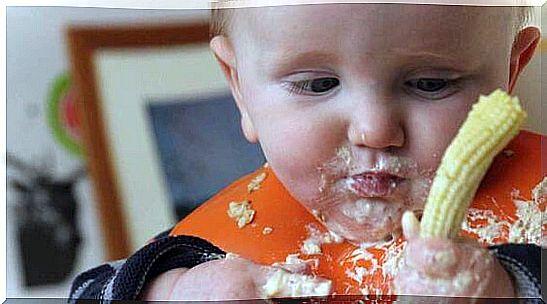
Baby-Led Weading, How to implement it at home?
Pediatricians recommend starting just after the baby’s 6 months. Once the little one has acquired certain cognitive and motor skills. But, how to implement this method capable of reducing the risk of childhood obesity by promoting healthy eating habits?
To begin, you must go to soft foods that can be manipulated by the baby’s hands. Another important detail is that these are textures that can be crushed by the tongue against the palate. Avoid nuts, raw carrots and fruits with seeds that could choke the child.
Finger foods
- Very well cooked vegetable bars. Chop up pieces of boiled or steamed carrots, squash and sweet potatoes and, once warm, offer them to your child.
- Various healthy foods. Always choose a variety of shapes and textures, such as broccoli sprigs, cauliflower, and baby corn.
- Pieces of tender fruit. Banana, pear, kiwi, strawberries and melon are excellent alternatives to savor and enjoy a good nutritious dessert.
- Grissini and toast. These hydrates also serve to taste a rich healthy snack.
- Balls of compressed rice. It is the simplest and most attractive way to eat this hydrate.
- Macaroni and fusili. It is the easiest type of pasta to hold. For greater safety, do not make them al dente, but leave them a while longer in the boiled water.







